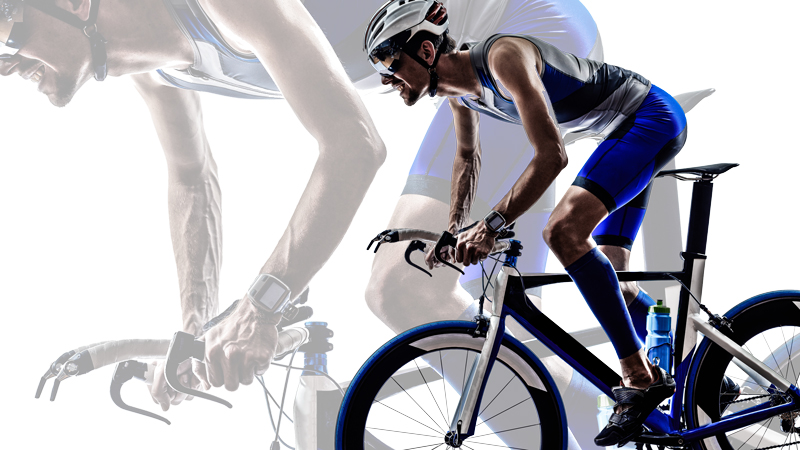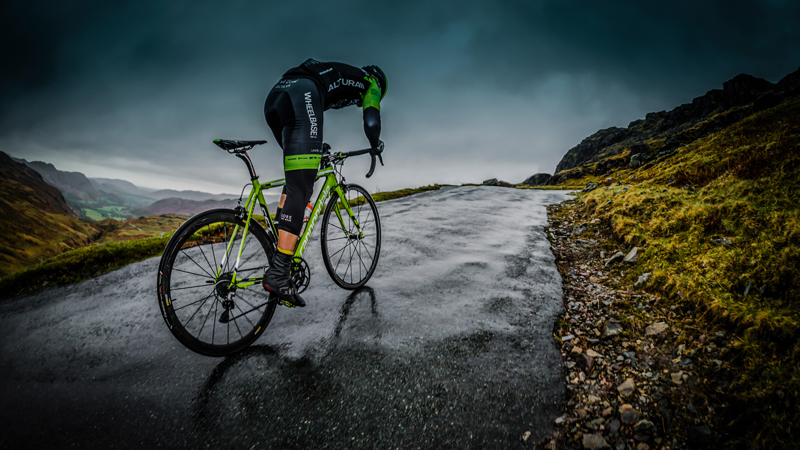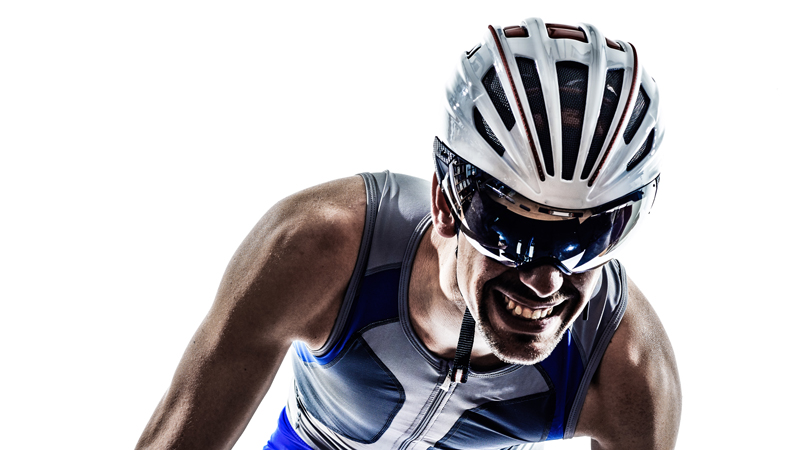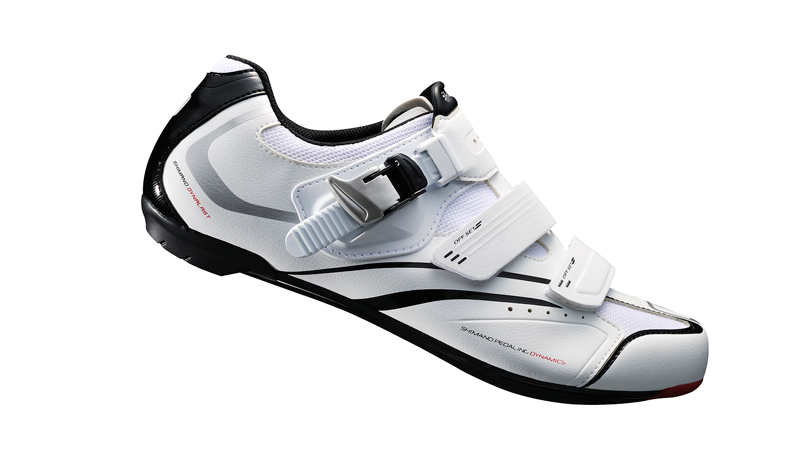10 Questions Every Cyclist Must Answer
Get the most out of your bike rides with our checklist of everything a cyclist needs to know

David Kenning, deputy editor of BikesEtc magazine, knows a thing or two about bikes. Having completed the Windsor-Chester-Windsor 600km in 2015, he’s currently in training for the Ride Across Britain – Land’s End to John O’Groats (1,545km) in nine days.
We asked him for the ten crucial things all riders should consider before jumping in the saddle.
1. Have I spent enough on my bike?
Decent road bikes start at around £350, so if you’ve spent any less than that, probably not. For £350 you can expect a well-built frame, usually in aluminium or steel, and reliable components, although it’s likely to be heavy and not as much fun to ride as a bike costing closer to £1,000. At this price, you can expect good-quality components and a better frame, often in lightweight carbon fibre.
For the average cyclist, £1,400 is the sweet spot where performance meets value. Many bikes at this price will be fitted with the superb Shimano 105 components, which offer reliable gear shifting and a smooth ride. For those with serious racing aspirations and deep pockets, upwards of £3,000 will get seriously high levels of performance and top-level components such as electronic gears and hydraulic disc brakes.
Whatever you intend to spend, it’s worth reserving a portion of your budget for a bike fitting – around £100-£150 – to ensure you get a bike that matches your personal dimensions, and that the saddle and handlebars are set to the correct height. A properly fitted bike is more comfortable, allowing you to ride longer, further and faster. Specialist bike fitter CycleFit has branches in London and Manchester, or if you’re up for a bit of DIY maintenance, try the BikeFastFit app.

2. Am I riding the right bike for my needs?
If you want to go as fast as possible, a proper racing bike will offer the best combination of an extremely stiff frame (for turning power into speed more efficiently), ultra-responsive handling, a low-down aerodynamic riding position and the lightest weight. This type of bike isn’t for everyone, however – unless you have the suppleness and core strength of a pro, you may find it uncomfortable to ride on for long, and the handling may be too twitchy to be enjoyable.
For less athletic riders, a better option may be a ‘sportive’ bike. These are designed to be more comfortable, with frame geometry (the angles between tubes) adjusted for a more relaxed riding position and more stable handling. Entry-level models start under £1,000 but at the top end of the range you’ll find bikes with lightweight carbon fibre wheels costing £5,000 or more.
Get the Coach Newsletter
Sign up for workout ideas, training advice, reviews of the latest gear and more.
3. Why am I riding?
To get maximum benefits from your riding, whether you’re training for an event or using cycling as part of a fitness regime, it’s worth making sure that when you go out, you have an objective in mind. Vary your time in the saddle to include a mixture of long, slow rides (good for building stamina) and shorter, more intense sessions featuring hill reps or sprint intervals.
British Cycling offers training plans that you can download for free from its website, which are suitable for everyone from complete beginners to those aiming to complete a 100-mile sportive.
If you’re really serious about improving your cycling, you can find details of British Cycling-affiliated coaches who will give you one-to-one personalised training. They don’t come cheap but they offer a level of expertise that has taken the likes of Sir Bradley Wiggins to international cycling superstardom.
4. Am I attacking hills correctly?
Gravity is one of the cyclist’s biggest enemies. As the road turns upwards, speed goes down, and there’s no easy way to defy the laws of physics, but conquering a big climb is one of the most rewarding experiences in cycling. Here are a few tips to help you reach your summit:
Lose weight: This is the obvious one. You could spend thousands of pounds on buying the lightest possible bike, but it will save 2-3kg at most. Far better to focus on losing bodyweight by following a structured diet and fitness regime (of which cycling may be a key part).
Pace yourself: Be the tortoise, not the hare, and don’t attack climbs from the start – you’ll only burn yourself out before you get to the top. Select a low gear at the start of the climb and aim to maintain a steady pace, focusing on your breathing and keeping your effort at a level you can sustain.
Practise your technique: There is no right or wrong way to tackle a climb, only the one that works best for you. Some riders like to get out of the saddle and ‘dance’ on the pedals, while others, such as Tour de France champion Chris Froome, prefer to stay seated and pedal at a high cadence in a very low gear. Find a hill near to practice on – one that takes 3-5 minutes to climb – and try using different approaches, varying your choice of gear, your cadence and whether you stay seated or stand to find out what suits you.

5. Am I reducing my chances of crashing as much as I can?
Crashing is a fact of life for pro cyclists. Spending most of their time riding in a big bunch and pushing the limits of their abilities, the margin for error is small. It’s a testament to their finely honed bike handling skills that big pile-ups aren’t more frequent.
While the risks may not be so high for the rest of us, we can still learn a lot from the pros. One of the best things you can do if you want to improve your bike handling is to join your local cycling club – it’s where even the best pros cut their teeth, after all.
Cycling clubs offer many benefits, not least regular group events, ranging from gently paced rides over moderate distances through to fast ‘chain gangs’ for aspiring racers. At all levels, experienced club members are on hand to offer advice, sharing their wisdom on the etiquette of riding safely in a group and technical skills such as cornering and descending.
Membership of a cycling club can cost as little as £10 a year, but the knowledge and experience they can impart is invaluable.
6. Have I optimised my nutrition?
Nutrition on the bike is a fine art, and precise requirements vary greatly between individuals. But over the course of a long ride, all riders will need to keep energy levels topped up to avoid the dreaded ‘bonk’ (the cycling equivalent of hitting the wall, when the body’s blood glucose tank is near empty). Gels are a good way to do this.
These contain either simple sugars such as maltodextrin, which is easily absorbed to give you a quick hit, or more complex sugars such as fructose, which is better for slow-release energy.
Some contain extra nutritional supplements such as caffeine to help keep you alert, electrolytes to replace vital nutrients lost through sweating, and protein to help repair damaged muscles. Which type you choose depends on the kind of riding you’re doing. Some experts suggest taking an energy gel as often as every 15-20 minutes, but this advice is generally based on riding at an intense level. For more relaxed rides, you won’t need to top up so often.
Experiment to find out which gels are most palatable to you, and avoid ones you’re unfamiliar with during a race or sportive – otherwise you’re risking an upset stomach that puts you out of action and ruins your big day.
If you don’t fancy expensive gels, you can always try old favourites such as jelly babies for much the same effect.
7. Do I have to ride in the cold and rain?
If you’re building up to an event and have a schedule to stick to, you can’t just put off your ride until the weather improves, so get yourself some proper winter gear and go out there and ride. After all, you can’t guarantee that the weather will be perfect on the big day, so it’s useful to condition yourself to coping with bad weather. But if you don’t have the same need to get the miles in there are other options, such as bringing your workout indoors with a turbo trainer.
These invaluable training devices can help you stay in the saddle all winter – and provide supplementary training at other times of year too. And they needn’t be expensive – the excellent Bkool One is just £165.
One of the key benefits of a turbo trainer is that you can use it for intense, highly focused workout sessions, making it especially useful for those with limited time. For a really intense workout, try a Russian Steps session, where you cycle for short intervals of maximum effort followed by a rest, increasing the interval each time.
8. Do I really need all this Lycra?
If you’re not in the best possible physical shape, tight-fitting Lycra cycling kit isn’t the most flattering choice of outfit, making you look like a third-rate superhero. However, there are good reasons why most cyclists opt to go against their better judgment and head out in skimpy clothes that leave little to the imagination.
First is comfort. Cycling bibshorts (Lycra shorts with integrated shoulder straps) are by far the most comfortable option for your lower half on the bike. There’s no waistband to dig in and the raised back section keeps your lower back warm when you’re hunching forward over the handlebars. What’s more, with no loose material and carefully placed seams, there’s little danger of chaffed thighs, while the padded seat is a useful shock absorber.
The other main reason is aerodynamics. When riding above 10mph, more than half of your effort goes into overcoming wind resistance. And this increases the faster you go – at 18mph, it’s around 85%. A close-fitting jersey helps to reduce the drag effect – wearing a flappy T-shirt is like riding with a parachute.
Get yourself kitted out with all the gear you’ll need at Chain Reaction Cycles. For performance, style and value, you can’t go wrong with Castelli kit, but note that the Italian sizing is on the small side.

9. Have I got the right footwear?
Most serious cyclists use ‘clipless’ pedal systems (so called because they do without traditional toeclips and straps). These require shoes with a plastic wedge called a cleat fixed to the bottom that locks into the pedal via a spring-loaded mechanism. By keeping your foot in a fixed position, your pedalling action will be smoother and more efficient.
Being attached to your pedals may sound daunting, but the mechanism is designed to release quickly when you twist your foot. You’ll soon get the hang of it and the benefits make it well worth the effort.
Another advantage of proper cycling shoes is the stiff sole – usually made of reinforced nylon or, in more expensive models, carbon fibre. Flexible-soled trainers will sap your power when cycling, reducing your efficiency so you have to work that bit harder. Over a long ride, this means you will be slower and will tire sooner.
Specialized Audax shoes (£200) are a stylish and high-performing choice. For a more affordable option, try Shimano R088 (£85)
10. Is my helmet fit for purpose?
Strictly speaking, helmets are not legally required when cycling on British roads, but they are required in most forms of racing and many other events such as sportives or charity rides, and you will usually be expected to wear one when riding with a club.
The most important consideration when buying a helmet is making sure it is a good fit – both the right size and the right shape for your head. Try on several different models if possible. For optimum protection, always make sure you wear it properly: the chinstrap should be snug but not tight, while the front of the helmet should be down over your forehead, not tilted backwards or at a jaunty angle. Cycling helmets are only rated for a single impact, so if you have a crash and hit your head, you must bin your helmet and replace it before your next ride.
Note that spending more on a helmet doesn’t necessarily mean better head protection. All helmets sold in the UK are required to conform to the same safety standards, regardless of price. The difference between a £50 helmet and one costing £200 is generally that the more expensive model is lighter, with better ventilation and aerodynamics. If these factors aren’t important to you, there’s no need to spend more than £50, but note that cheaper helmets are often limited in their range of adjustability, so you may need to spend a little more to ensure a good fit.
